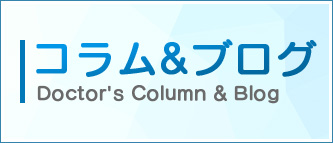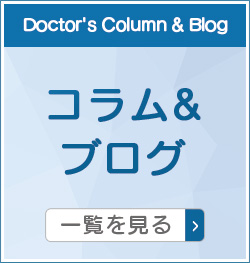昨年の3月にウィーンで開催された第1回の線維筋痛症の国際学会に参加してきましたが、残念なことに日本人医師は私一人でした。第2回の今年は、Covid-19パンデミックのため延期に加えてバーチャルでの開催となりました。
本日紹介する演題は、イタリアと日本の医療状況は極めて類似していることを明らかにしてくれます。
日本の保険診療は、しばしば「3分診療」と揶揄されますが、それは欧州でも同じであるようです。
一人に最低でも30分以上、通常は1時間程度を要する線維筋痛症の診療は、最低でも10人分の対価が得られない限り、医療機関は大きな赤字に陥ります。
つまり、それだけ医療側も負担を強いられ、自己犠牲の上に診療が維持されているのです。この問題は、保険医療制度の欠陥が最も残酷に表面化している局面です。
線維筋痛症の患者会は、上記のような国内外の線維筋痛症医療の現状の問題点を会員の患者さんが共有できるように情報提供し、医療側と患者側の両方の立場が線維筋痛症を巡る医療体制の課題を共有し、対立ではなく、協調のための取り組みを始めていただきたいものです。
Case Vignettes: Dealing with Fibromyalgia When You Have 10 Minutes per Patient…
症例描写:患者一人当たり10分で線維筋痛症に対処する.
Valeria Giorgi
(ヴァレリア・ジョルジ)
L. Sacco University Hospital, Italy
(L.サッコ大学病院、イタリア)
Summary
Dealing with fibromyalgia in daily clinical practice implies the existence with two different points of view: the one of the patient and the one of the doctor. The problem is to make these two positions meet on a common ground, since they are very much apart.
日常の臨床で線維筋痛症を扱うということは、2つの異なる視点を持つことを意味している。すなわち、患者の立場と医師の立場である。問題の所在は、これら両者の立場は非常に離れているので、両者を共通の基盤の上で満たすようにすることである。
Fibromyalgia patients usually come from years of consultation with various specialists 1,2. They have been told any type of things, from the fact that their disease is present “just in their head”, to the most imaginative diagnoses. Therefore, they sit in the waiting room confused, in need of detailed explanations, and full of questions to be asked to the doctor they are about to see. For example, they want to know whether they have a “real” disease, or, if they are already aware of their diagnosis, whether their disease is progressively invalidating and which would be the prognosis.
線維筋痛症の患者は通常、年余に及ぶ様々な専門家¹-²への受診を経て来院する。彼らは、自分の病気が「単に彼らの頭の中だけに」存在しているという事実から、最も想像力豊かな診断に至るまで、あらゆる種類の物事を話してきたのである。そのため、彼らは詳細な説明を求め、これから診察を受ける医師に質問しようとしていることでいっぱいになり混乱した状態で待合室に座る。例えば、自分が「本物の」病気なのか、あるいは自分の病気が進行性に悪化していくものなのかどうか、予後はどうなるのか、という診断がすでについているのかどうかを彼らは知りたがるのである。
On the other hand, there is the situation in the doctor’s perspective. Especially in this moment, hospitals have not the possibility to hire enough physicians so that patients’ requests are fulfilled: hence, doctors are exhausted by night shifts and by uncountable hours spent in their outpatient clinic. They deal with dozens of patients during the same morning and they are constantly beyond schedule.
一方で、医師の立場から見た場合の状況もある。特に今の時代、病院は患者の要望を満たすために十分な医師を雇うことができない。したがって、医師は夜勤や外来で途方もないほどの時間を費やして疲弊している。医師は夜勤明けの朝に何十人もの患者を相手にしているため、予定を超えてしまうことが多い。
With this picture in mind, it is clear that there will be the creation of a contrast: between fibromyalgia patient, who has particularly more needs of being listened to and of receiving explanations, and the doctor, who is allowed to talk with his or her patients for just ten minutes. The consequence of this contrast will be dissatisfaction, on both sides: the doctor will be disappointed by the inability of the health system to deal with chronic patients, while fibromyalgia patient will feel frustration because of the lack of sufficient explanations and care.
このような状況を考えると、対立が生じるであろうことは明らかである。つまり、線維筋痛症の患者は、話を聞いてもらいたい、説明を受けたいというニーズが特に高いのだが、医師は患者とわずか10分しか話をすることが許されないからである。この対立の結果、医師は慢性的な患者に対応すべき医療制度の無能力に失望させられることになり、一方線維筋痛症患者は十分な説明とケアがないことにフラストレーションを感じるだろう。
It is clear that finding a definitive solution of this problem is beyond the capability of this relation. Anyway, we can subdivide the problem in two parts. On the one hand, there is the need of a better education of physicians on fibromyalgia3, bearing in mind also the biopsychosocial model of medicine, with the aim of avoiding paternalistic ways of treating patients via a trivialization of their feelings; on the other hand, there is the strong necessity of reforming and improving the national health system part that deals with chronic patients, and in particular fibromyalgia patients, who need a clear recognition of their disease and the establishment of a unique diagnostic and therapeutic pathway, shared by the GP and by various specialists.
この問題の決定的な解決策を見出だすにあたって、これまでの関係性は許容限界を超えていることは明らかである。いずれにしても、この問題を二つに細分化することができる。その一方は、患者の感情を軽視しかねない父権的な治療方法を避ける目的とともに、医療の生物・精神・社会モデルを念頭に置く、線維筋痛症³に関与する医師のためのより良い教育が必要である。もう一方では、慢性的な患者、特に線維筋痛症の患者を扱う国民健康保険制度部門の改革と改善を確立するという断固たる必要性があり、患者としても病気を明確に認識し、開業医や様々な専門家と共有する独自の診断・治療経路を確立する必要がある。
References:
1. Choy, E. et al. A patient survey of the impact of fibromyalgia and the journey to diagnosis. BMC Health Serv. Res. 10, (2010).
2. Gendelman, O. et al. Time to diagnosis of fibromyalgia and factors associated with delayed diagnosis in primary care. Best Pract. Res. Clin. Rheumatol. 32, 489–499 (2018).
3. Perrot, S., Choy, E., Petersel, D., Ginovker, A. & Kramer, E. Survey of physician experiences and perceptions about the diagnosis and treatment of fibromyalgia. BMC Health Serv. Res. 12, 1–8 (2012).
ARCHIVE
- 2024年4月
- 2024年3月
- 2024年2月
- 2024年1月
- 2023年12月
- 2023年11月
- 2023年9月
- 2023年7月
- 2023年5月
- 2023年4月
- 2023年1月
- 2022年12月
- 2022年11月
- 2022年9月
- 2022年7月
- 2022年6月
- 2022年5月
- 2022年4月
- 2022年3月
- 2022年2月
- 2022年1月
- 2021年12月
- 2021年11月
- 2021年10月
- 2021年9月
- 2021年8月
- 2021年7月
- 2021年6月
- 2021年5月
- 2021年4月
- 2021年3月
- 2021年2月
- 2021年1月
- 2020年12月
- 2020年11月
- 2020年10月
- 2020年9月
- 2020年8月
- 2020年7月
- 2020年6月
- 2020年5月
- 2020年4月
- 2020年3月
- 2020年2月
- 2020年1月
- 2019年12月
- 2019年11月
- 2019年10月
- 2019年9月
- 2019年8月
- 2019年7月
- 2019年6月
- 2019年5月
- 2019年4月
- 2019年3月
- 2019年2月
- 2019年1月
- 2018年12月
- 2018年11月
- 2018年10月
- 2018年9月
- 2018年8月
- 2018年7月
- 2018年6月
- 2018年5月
- 2018年4月
- 2018年3月
- 2018年2月
- 2018年1月
- 2017年12月
- 2017年11月
- 2017年10月
- 2017年9月
- 2017年8月
- 2017年7月
- 2017年6月
- 2017年5月
- 2017年4月
- 2017年3月
- 2017年2月
- 2017年1月
- 2016年12月
- 2016年11月
- 2016年10月
- 2016年9月
- 2016年8月
- 2016年7月
- 2016年6月
- 2016年5月
- 2016年4月
- 2016年3月
- 2016年2月
- 2016年1月
- 2015年12月













